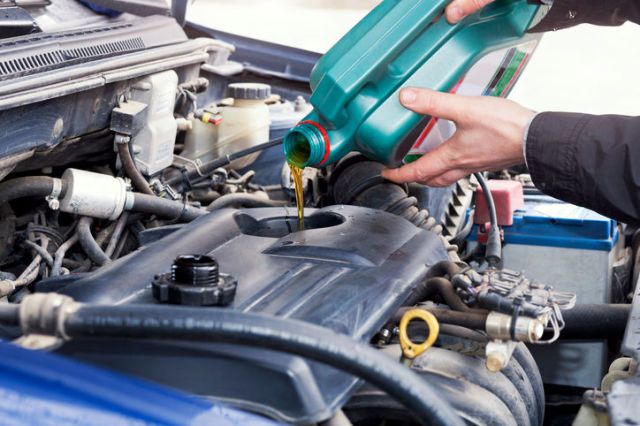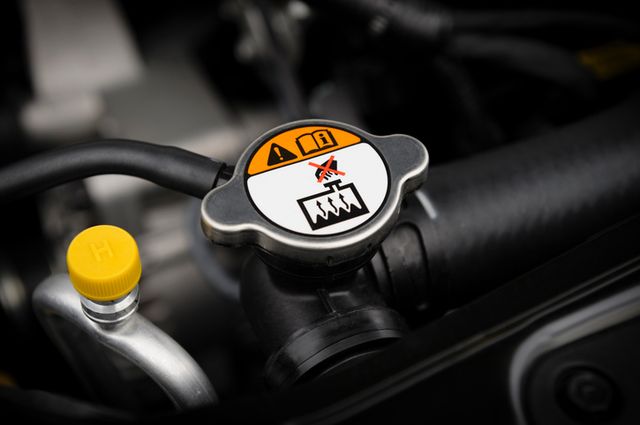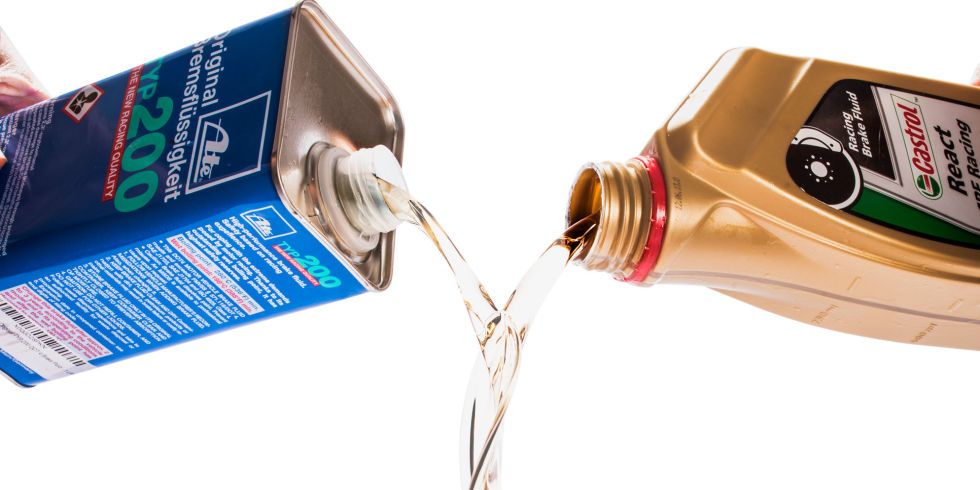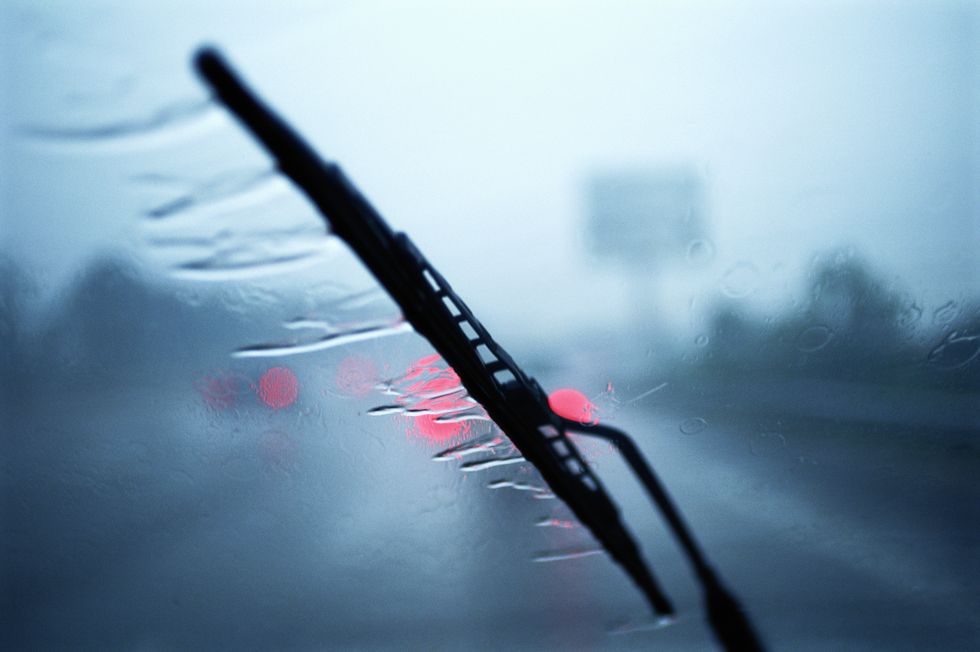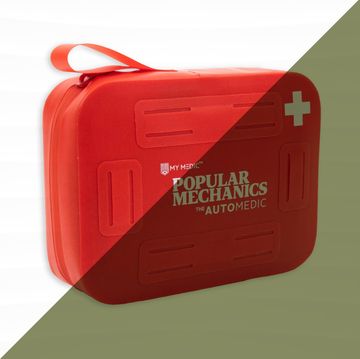Since the invention of the automobile, drivers have sought ways to make their cars more efficient and reliable. Today's cars are the best they've ever been, but they're still not the maintenance-free wondermachines. Cars also need frequent TLC, and its an auto's six different fluids that need the most attention.
Fluids play a huge role in almost every facet of your car, including fuel economy and longevity. Keeping them at the proper level will help your car last longer and drive better, something we can all get behind.
Here's how to check the six essential fluids in your car.
Engine Oil
After fuel (unless you have a fancy EV), oil is your car's most important fluid. Engines components spin thousands of times a minute, and it's oil that keeps everything moving smoothly.
Most cars have a dipstick in the engine bay which lets you quickly inspect the oil. It's best to check your oil after your engine has been turned off for at least 10 minutes so the oil can settle at the bottom and cool off. First, pull the dipstick out and wipe it clean with a towel or rag. Then, reinsert it and pull it back out. The dipstick is marked with maximum and minimum indicators that show how much oil is in your engine. The oil on the dipstick should be near maximum. If it's at or below the minimum, add more immediately. A low reading could indicate your engine is leaking or burning oil, which can cause damage if left untreated.
Oil level is one thing, but its condition is equally important. To check it, you're going to have to get your hands dirty. Smear the oil on the dipstick between your fingers. It should feel slick and smooth – if you notice any particles or grittiness, components are likely wearing down, which is a major issue.
Also look at the color of the oil. If it's a yellow or amber color, you're good to go. If it's a darker coffee color or black, it's time for an oil change, and if you see a milky color that means coolant is leaking into the engine. Speaking of which...
Coolant
With all the combustion and friction that happens in an engine, it produces a lot of heat. Coolant (also known as antifreeze) works to keep everything, well, cool, by absorbing engine heat and dissipating it through the radiator. Maintaining the correct coolant level prevents overheating.
You only have to check this fluid every 50,000 miles or so, but if there's a leak or other issue it's important to know how to top it off. Warning: Never check your coolant while the engine is hot. Pressurized coolant can spray and cause burns. Always wait for the engine to cool completely before checking the coolant.
The process to check coolant varies from car to car. If your car has a coolant expansion tank, look to see if the coolant falls between the minimum and maximum indicators on the tank. If it doesn't, open the radiator cap to see if the coolant is filled up to the top. Before you add coolant, make sure it's a type approved for your vehicle and give the radiator a few minutes to "burp" out any trapped air bubbles before you put the cap back on.
Power Steering Fluid
If you've ever driven a classic car, likely the first things you noticed was the super heavy steering. Can you imagine trying to parallel park? Modern cars have upgraded to power steering to make maneuvering easy at any speed, and many power steering systems are hydraulic, using pressurized fluid to make turning the wheel effortless (though some newer models now rely on electric streering). There's no set timeframe on when power steering fluid needs to be replaced, but you should still know how to check it.
Like with other fluids, look for either a dipstick or reservoir in the engine bay. The process is similar in that you'll remove the dipstick or check the markings on the reservoir. If the fluid is low just top it off, but it's essential to use the type specified for your vehicle to avoid damage. If you find that you're frequently adding fluid, it's likely there's a leak, and your car will become increasingly difficult to steer if it isn't addressed.
Brake Fluid
The importance of your car's brakes needs no explanation. Modern car brakes are hydraulic, meaning that fluid connects the pedal to the brakes themselves. When you step on the pedal, a plunger pressurizes the brake fluid inside the lines, which causes the brake pads to clamp on the rotors and slow your car. It's supposed to happen instantly – if there's any delay or abnormal feeling to your brake pedal, the fluid is the first thing to check.
Over time brake fluid can become contaminated by water, which can make brake lines rust. Leaks can also form, leading to a spongy pedal feel or irregular brake performance. Most cars have a brake fluid reservoir in the engine bay, and checking it is as simple as taking a look at its level and color. Like with other fluids, make sure the level falls between the minimum and maximum indicators. Add more if it's below the minimum, but make sure it's a type compatible with your car. Brake fluid comes in several varieties with their own distinct colors, but all should be translucent, not cloudy or dark. If you can't see through your brake fluid, get it replaced.
Transmission Fluid
Transmission fluid serves a similar purpose as oil in the engine: it lubricates and cools the components inside your transmission. Transmissions contain gears, clutches (even in automatics), and valves which must move smoothly to provide seamless shifts. While many transmissions come with "lifetime" fluid that should never need replacement, bad transmission fluid can cause rough shifting, strange noises, and uncontrolled surging that make driving difficult.
If you experience any transmission issues, check the fluid first. Some cars have a dipstick, however others require a professional mechanic to inspect the fluid condition. If your car has a dipstick, the process is the same as above, though you'll need to have the engine turned on and the transmission in Park or Neutral to get an accurate read. Inspect the fluid level, as well as its condition. It should be amber or red in color, and feel smooth. Like with other fluids, if it's dark, cloudy, or gritty, it means there is a problem that needs to be inspected.
To add transmission fluid, pour it into the fill tube if your vehicle has one. After verifying the fluid level on the dipstick, move the gear selector through the gears with your foot on the brake to help the new fluid flow through the transmission. Transmissions are complex pieces of equipment, so if you continue to have problems it's best to contact a professional.
Windshield Washer Fluid
Windshield washer fluid doesn't have any effect on your car's performance, but it's still vital to safe driving. After all, if you can't see where you're going, you won't get very far.
Fortunately, it's the easiest fluid to maintain. You can buy jugs of it at gas stations or auto supply stores (or make your own) on the cheap. Simply pour the fluid into the reservoir until it's full, close the cap, and be on your way.
Fuel is what your car uses the most, but don't neglect the other fluids. Make a schedule so you don't miss oil changes, and always watch out for unusual noises, odors, or vibrations. These fluids might not stop you like an empty tank of gas, but they're equally important in keeping your car in great working order.
Alex Leanse is a lead writer for yourmechanic.com, a car site dedicated to providing advice on how to keep your car running, and sending mobile mechanics to your home or office for maintenance and repair services.

